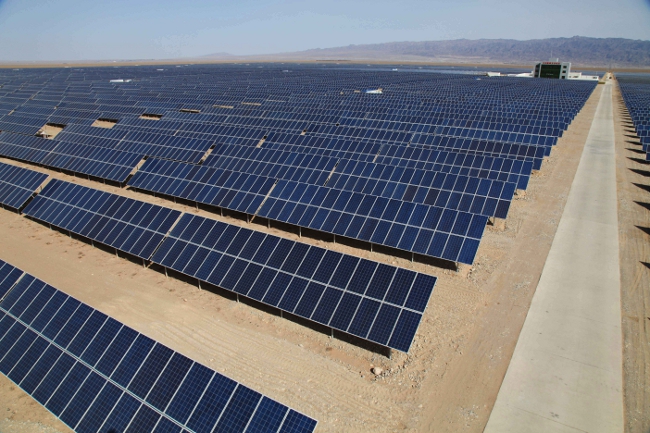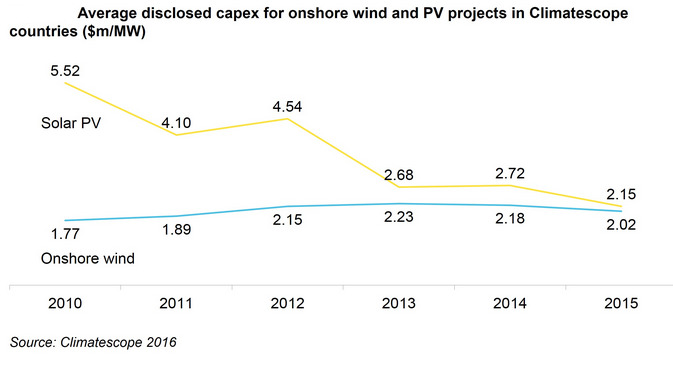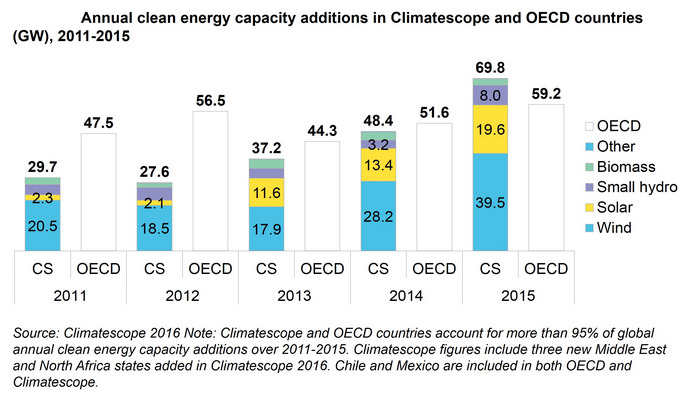
Driven by steep cost declines in PV equipment, solar is now on a par with wind energy and will soon become the cheapest form of energy in developing nations, according to the Climatescope 2016 report from Bloomberg New Energy Finance (BNEF).
In recent tenders, solar is already out-competing fossil fuel-based projects in terms of price, said the report, which covers the 58 Climatescope countries, all regarded as developing nations in Africa, Asia, the Caribbean, Latin America and the Middle East.
Unlock unlimited access for 12 whole months of distinctive global analysis
Photovoltaics International is now included.
- Regular insight and analysis of the industry’s biggest developments
- In-depth interviews with the industry’s leading figures
- Unlimited digital access to the PV Tech Power journal catalogue
- Unlimited digital access to the Photovoltaics International journal catalogue
- Access to more than 1,000 technical papers
- Discounts on Solar Media’s portfolio of events, in-person and virtual
Or continue reading this article for free
Average capital expenditure (capex) for PV projects in such countries during 2015 stood at US$2.15 million/MW, rapidly approaching average wind capex of US$2.02 million/MW, as seen in the following table:

BNEF also noted that the fulcrum of clean energy development has now shifted from the world’s northern countries to the south.
This year, the 58 Climatescope countries saw more renewables investment than the well-developed Organisation for Economic Co-operation and Development (OECD) countries, with US$154.1 billion and $153.7 billion invested respectively. Climatescope countries also installed more renewables – largely driven by China – with 69.8GW deployed versus 59.2GW in OECD countries.

An eleven-fold growth in PV investment in Climatescope countries from US$6.4 billion in 2010 to US$71.8 billion in 2015 has also been fuelled by the steep reductions in solar equipment costs.
The report stated: “Among all clean energy technologies, PV has seen its costs fall fastest and furthest over the last decade. This has allowed capex for projects in Climatescope countries to drop by more than half since 2010. It has also allowed PV project developers to sell their power at lower, more competitive rates.”
However the report warned that countries with the highest penetrations of wind and solar are facing troubles with integration given the unreliable nature of the grids in many of these emerging countries.
Markets with huge potential such as Brazil, China, India and South Africa were also cited as facing major solar industry troubles ranging from payment and connection delays to serious curtailment.
On another note, the low prices have also come a long way in driving a surge in companies breaking into the off-grid solar space, attempting to bring power to the 1.4 billion people that have no access to electricity. Multiple start-ups are now active in the pico solar, mini-grid and distributed solar space. As of June this year nearly 11 million households are estimated to have pico solar systems
